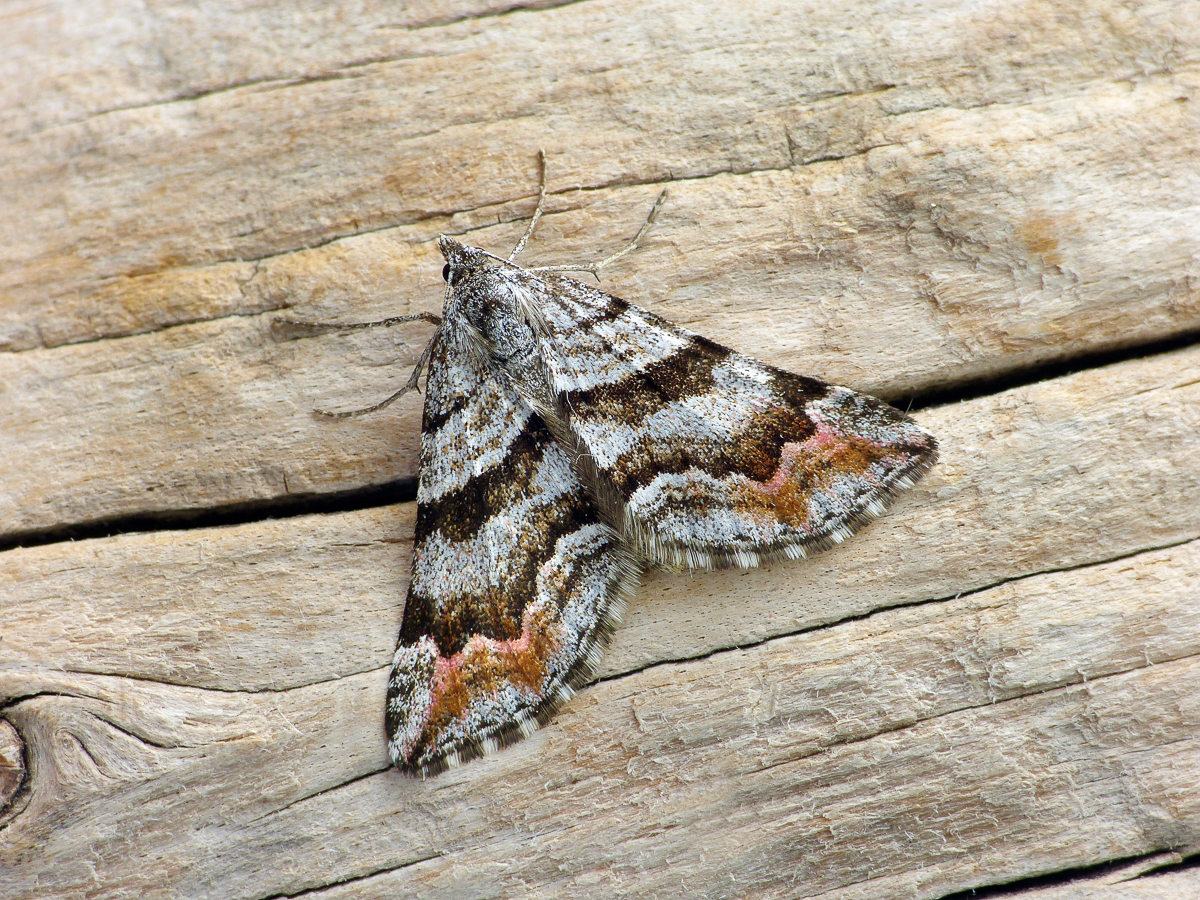
Photo © Patrick Clement
Carsia sororiata, the Manchester treble-bar, is a moth of the family Geometridae. The species was first described by Jacob Hübner in 1813. It is found in northern and central Europe, the Urals, Siberia, the Far East, northern Mongolia and in North America from Alaska to Newfoundland and to New Hampshire.
The wingspan is 20–30 mm. The basic colour of the forewings is slate grey, light grey to white grey. Two distinctive, wide lines cross the front wing. They are light brown, brown to black brown. The interior cross line is almost straight, the exterior cross line is bent and has two outward pointing spikes. The subspecies occurring in Central Europe, C. s. imbutata, has a brownish-yellowish to reddish-brown outer field at the points of the outer cross line. Very elegant lines are sometimes found. In some specimens, the two lines form "bridge" in the posterior half of the wing. The fringes are alternately bright and dark. An apical extension to the reddish-brown field extends from the apex. The egg is at first whitish yellow, becoming deeper yellow. The micropylar rosette is 8-leaved; sides with irregular reticulation, in places undeveloped. The larva is rather stout, of uniform thickness, the dorsal surface rather deep brownish-red, with very fine blackish-red dorsal and subdorsal lines and a broad bright yellow lateral stripe containing at the folds between the middle segments some beautiful red spots; venter pale greenish yellow with paler, dark-edged central line.
Adults are on wing from July to August.
The larvae feed on various Vaccinium species (including V. uliginosum, V. oxycoccos and V. myrtillus) as well as Rubus arcticus.
Source: Wikipedia
The primary larval foodplants are Bilberry (Vaccinium myrtillus), Cowberry (Vaccinium vitis-idaea) and Cranberry (Vaccinium oxycoccos).